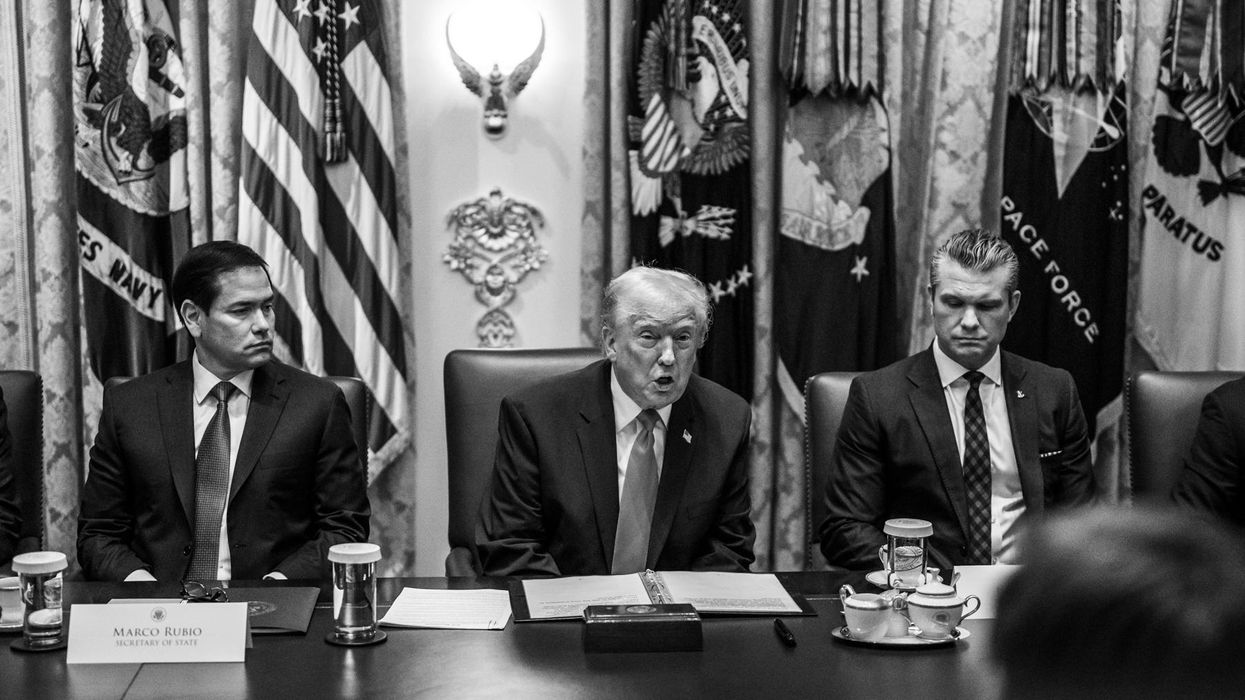In an era of dramatic global transformation, a new report by Michael Swaine, Jessica Lee, and Rachel Esplin Odell of the Quincy Institute for Responsible Statecraft calls for a new U.S. strategy toward East Asia centered on diplomacy and military restraint.
Entitled “Toward an Inclusive & Balanced Regional Order: A New U.S. Strategy in East Asia,” the report warns against a strategy based on military dominance and zero-sum competition with Beijing. Instead, the United States must seek a stable military balance of power with China; a more inclusive, positive-sum set of political and economic arrangements with allies and partners in the region; a proactive diplomatic strategy to tackle growing security challenges such as Taiwan and North Korea; a new, more targeted approach to human rights promotion in the region; and domestic reform to enhance America’s influence and appeal abroad.
Rather than view U.S. policies in East Asia through the prism of so-called great power competition with China, U.S. regional strategy must adopt a more realistic, balanced approach that reflects the broad desire for cooperative engagement shared by many nations in the region, along with stabilizing deterrence and crisis management policies to guard against conflict. The report calls on Washington to “welcome positive relations between China and other Asian nations” and to promote “inclusive multilateralism” to coordinate action on issues of common interest. This means managing the worsening threat of climate change as well as current and future pandemics, and handling transnational issues such as financial instability, maritime insecurity, and nuclear weapons in consultation with countries in the region, including China.
A central requirement for the success of this new U.S. East Asia strategy is an accurate assessment of the challenge that China poses to U.S. interests and objectives. Here, the authors stress the need to recognize the mixed nature of that challenge, involving significant concerns and threats along with key opportunities to work with Beijing to stabilize the region and promote common development.
On one hand, China is a major competitor of the United States in some realms of great importance to East Asia, such as trade, technological innovation, and military influence in East Asia. It also strongly advocates global norms of state sovereignty and collective economic rights over individual political and human rights. On the other hand, Beijing supports many global regimes that also serve U.S. interests, has a common interest with Washington in preserving East Asian peace and prosperity, and remains a critical partner in dealing with a host of common challenges in areas such as global health, carbon emissions, and nuclear proliferation.
To deal with these complex challenges and opportunities, U.S. strategy must seek to stabilize Sino-American regional security competition. This can best be achieved through the pursuit of a less escalatory U.S. force posture emphasizing denial rather than control of key maritime and air spaces in East Asia. Additionally, Washington should undertake efforts to get its Asian partners to take on greater responsibility for their own defense in order to permit the United States to reduce its own military profile in the region and assist in the creation of a U.S.-allied denial force posture. The United States should also seek a serious dialogue with China and other relevant nations aimed at reducing military tensions over hotspots such as the Korean Peninsula, Taiwan, and the East and South China Seas.
In the case of the Korean Peninsula, the strategy emphasizes the need for a phased diplomatic approach, beginning with a formal declaration ending the Korean War as a means of making progress toward denuclearization of the peninsula. Regarding nuclear weapons, the QI report calls for an end to provocative and escalatory new weapons systems, in recognition of the reality of the mutual vulnerability to nuclear attack that exists between Washington and Beijing, and the declaration of a No First Use policy — except in cases where a U.S. ally is attacked with nuclear weapons.
In trade, investment, and technology, the report advocates replacing largely indiscriminate and counter-productive tariffs and technology decoupling efforts aimed at Beijing with pressure and persuasion to resolve more clearly defined American complaints in a verifiable manner. This should be combined with greater U.S. efforts to improve multilateral structures and fora governing these areas, beginning with reform of the World Trade Organization. In the technology realm in particular, the report proposes strong protections around a well-defined and narrow set of national-security-related technologies.
Finally, regarding human rights and democracy promotion, the report suggests that the U.S. adopt a multipronged approach that treats human rights concerns separately from geopolitical disputes, bolsters multilateral efforts to preserve norms, provides targeted support to repressed peoples and cultures, and pursues direct dialogue with repressive governments. In all these areas, U.S. actions should strive to maximize effectiveness while minimizing nationalist backlash and mutual antagonism.
The final and most crucial plank of the new East Asia strategy focuses on rebuilding U.S. regional and global influence by strengthening competitive capacities and improving U.S. governance and human rights protections at home. The authors stress the need for greater public and private investments in critical physical infrastructure, health care, education, and high-tech research and development, both to enhance competitiveness globally and to provide more manufacturing jobs in regions hard-hit by outsourcing.
While such actions are essential to U.S. efforts to compete with China, the report also points out that U.S. leaders should not hype the threat China poses to produce the political support necessary for success in this area. Such exaggeration will simply fuel worst-case, zero-sum thinking toward Beijing, leading to extreme, counter-productive efforts at containment and decoupling. These domestic actions should be taken primarily because they are good for the country and are supported by majorities of Americans in both political parties.
Beyond such improvements, the report also stresses the need to improve America’s image at home and abroad as a just, compassionate, and tolerant society through major reforms in areas such as policing, criminal justice, and immigration enforcement. This effort should also include less inflammatory approaches to Chinese “influence operations” in the United States, with more prudent, targeted law enforcement measures that guard against guilt-by-association harassment by government agencies.
A new approach toward East Asia will require recognition of the dangers of pursuing an ideologically driven, military-first policy centered on containing China. This report provides essential context for understanding the current U.S. approach toward East Asia and offers an alternative strategy that better serves American interests in the region.
You can read the full report here.
















